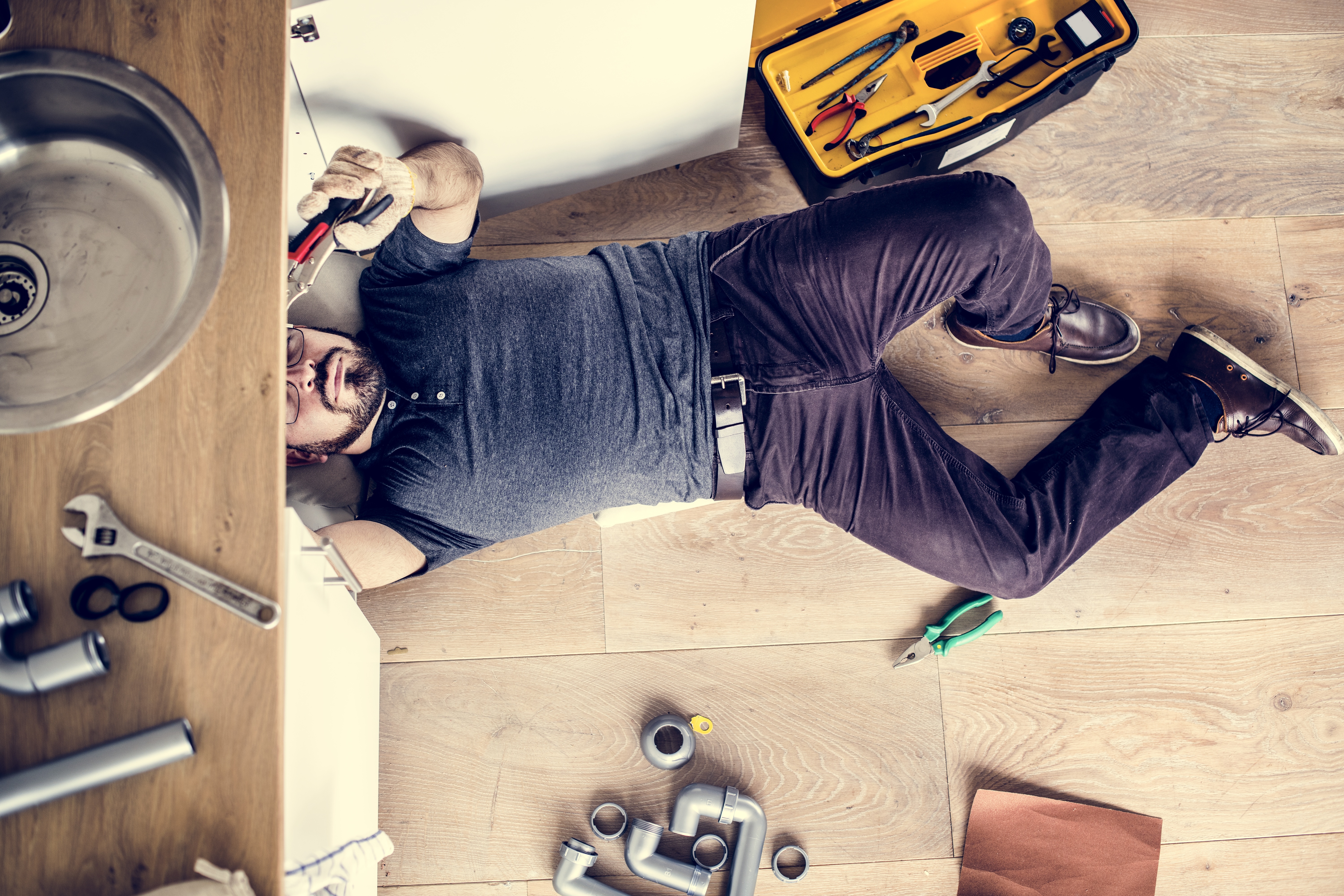 (412) 364-9114
(412) 364-9114

Try as we might, our homes never run with 100% efficiency. The AC is busted or the dishwasher is down for the count. Plumbing issues also top the list of household nuisances, sending your home (and perhaps your sanity) into disarray. Where’s that dripping sound coming from? Why is the floor wet? Leaky plumbing is a common problem, and sometimes you can fix it yourself. Let’s look at how to find out if you have a plumbing leak and what to do about it.
In some cases, there are telltale signs that a leak exists in your home. Other times, the situation is a complete surprise. Look for these clues to determine whether you have a plumbing leak.
Standing water hanging out in some location it shouldn’t be is a red flag of leakage. Suspect a problem with your sink? Leaky faucets may cause water to pool on the counter, while a sink rim leak causes water to leak into the gap between faucet and counter—pooling in the cabinet underneath.
A key cause of mold is moisture from leaky plumbing. For instance, leaky pipes under sinks and in cabinets result in a steady stream of water and mold growth because of that closed, moist environment and wooden cabinet construction. Poorly-sealed toilets cause major headaches, too, because mold grows when water leaks around the base, onto the floor and/or into the subfloor.
A significant sign of shower and/or tub leaks, you want to catch this issue early to avoid a major bathroom overhaul. Splash leaks (water splashing past the shower door or curtain during regular use) happen in every home, but cause problems when the same spot is affected. When water frequently settles in the same place (i.e. a corner just outside the tub), laminate or tile flooring will curl or loosen, creating an uneven surface and inviting mold. The same may happen with the interior of cabinets when pipes leak, deteriorating the inside wood or particle board.
In the absence of any other signs of trouble, keep an eye on water usage. Do bills seem to be increasing, despite consistent water usage? Take a look at the meter. Mark or make a note of where the needle is pointing on the water meter, then turn off the water supply and all associated appliances and fixtures for about eight hours. If the needle moves during that period, you have a plumbing leak somewhere.
You’ve taken steps to determine that a leak exists in your home, which could provide some idea of the room affected by the problem. If not, put on your detective hat and prepare for some sleuthing. You may need to move appliances and furniture around or thoroughly examine each room.
If you suspect a leak in a specific location, like under the kitchen sink, trying moving things around for a better look. Start by emptying out the bottom cabinet and flashing a light inside to look for wet spots, peeling or mold. Cluttered bathroom? Move decor and bathroom supplies away from the toilet area to expose any leaks at the base.
It might not even be obvious where the issue lies, the water meter readout simply exposed an inconsistency. In this case, start digging around. Exposed pipes look OK? Next! No water saturation on ceilings? Move on. Move room by room and look for those problem signals we discussed, as well as cracked caulking on tubs and floors or broken bolts around the toilet.
Eureka, there’s the problem! But what should you do about it? Some of the most common problems occur in the kitchen or bathroom, such as:
Remedying a splash leak often amounts to using increased caution when bathing or showering. You’ll want to ensure that the door or curtain is completely closed and sealed to guard against water leakage. If this doesn’t fix the problem entirely (and for existing damage), consider adding a splash guard to the wall or running some caulking into gaps or around the shower door frame.
A leaking sink rim is annoying, but not a tragedy. To fix this, tighten the faucet base or the clips that hold the sink to the countertop. Cracked caulking? Peel it away and start fresh. Still more, if the under sink pipes are leaking, tighten any connections and if necessary, replace the supply or shutoff valves.
Toilet leaks might happen because various parts aren’t situated correctly, making water leak with every flush. The closet flange both mounts the toilet to the floor and connects it to the drainpipe. If there’s an issue with the flange, water can end up everywhere. If it’s too low, install a flange riser to fix the problem. Alternatively, if the flange is broken, replace it with a metal repair flange.
Simple plumbing leaks can be handled with a bit of knowledge and a good toolbox. Homeowners aren’t equipped to handle every plumbing mishap, though, so we’re here to help. For complex problems, like bathroom remodeling or excavation endeavors, call on the team at Terry’s Plumbing. Get in touch today to discuss your needs and get a project quote.